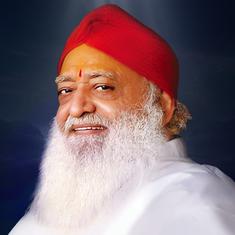Scientific advances were thought to have transferred chucking to the realm of fact. But the reaction to the International Cricket Council’s decision to suspend the Pakistani spinner Saeed Ajmal shows that chucking remains as emotional and polarising as ever. In Ajmal, cricket has lost, at least temporarily, its most exciting and threatening spinner. But the ICC’s belated crackdown on chucking, after years of non-enforcement, is to be welcomed.
Chucking excites such debate in part because of cricket’s essential sanctimony, its traditional self-image as a sport that transcends mere athletic gifts or national competition to embody high moral values. In the 19th and 20th centuries, chuckers were seen as cheats who rejected the spirit of cricket, and were generally hounded out of the game.
Swinging too far
In recent years, the debate over chucking has gone too far to the other side. The most prominent alleged chuckers of the 1990s, Muttiah Muralidaran and Shoaib Akhtar, were Asian, leading to whispers of racism. Cricket’s authorities, confronted with biomechanical evidence that all bowlers chuck to some degree – bend and then straighten their arm, now known euphemistically as “flexing”– (with the sole exception of the West Indies’ Ramnaresh Sarwan) allowed bowlers to flex by up to 15 degrees.
The 15-degree limit was presented by the ICC as a legitimation of existing practices, rather than a fundamental rule change. Fifteen degrees was said to be the point at which a flex or kink is visible to the naked eye. Sceptics claimed that the limit was set to protect Muralidaran, whose doosra involved 14 degrees of flexion.
Instead of settling the question of chucking, the 15-degree rule led to greater confusion and, on the field, to anarchy. Umpires concluded that they had been disempowered and, wary of the opprobrium that Darrell Hair and Ross Emerson (the Australian umpires who had called Muralidaran for chucking) had received, refrained from reporting bowlers for chucking. Many players and commentators argue that no bowler intentionally chucks and that bowlers such as Ajmal ought to be welcomed for the variety they bring to cricket. Unlike with a fast bowler, a spinner chucking poses no physical threat to the batsman.
But the idea that bowlers do not intend to flex their elbows, and that 15 degrees did not constitute fundamental change, has been exploded by the facts. The rule change led to an explosion of finger spinners with what looked like clear kinks in their actions: bowlers such as Shane Shillingford, Sachitra Senanayake and Pragyan Ojha. Finger-spinners took to bowling in full sleeves. India international R. Ashwin, hitherto straight-armed, admitted that he was trying to “do a little bit” more with his elbow: “Why should I lag behind if someone else is getting a competitive edge?” Straight-armed finger spinners looked to be going the way of serve-and-volley specialists in tennis.
Worst of all, cricket fans and many experts were left bemused. If a flex was only visible to the naked eye after 15 degrees, why did so many more bowlers appear to be visibly flexing? In England, especially, commentators and even players openly suggested that Ajmal was a chucker. The ICC, unhappy with the biomechanics centre at the University of Western Australia that was used to test bowlers – and invariably cleared them– accredited a number of new testing centres and encouraged umpires to report bowlers. The result is that a number of off-spinners have been reported and suspended in 2014: Kane Williamson, Senanayake, now Ajmal.
Ajmal was reported in 2009, and cleared: the new findings indicate either that his action has changed, or that one of the tests was faulty. Osman Samiuddin, Pakistan’s leading cricket writer, argues that Ajmal’s action has changed due to overwork. Like many others, he laments the suspension of one of cricket’s best bowlers at a time when the game has become dominated by batsmen.
Credible testing
There is no question that the balance between bat and ball needs correcting. The 15-degree rule, if properly enforced with credible testing, constitutes an improvement over the earlier, unscientific regime. But there are plenty of other ways to give bowlers more of a chance. Restrictions on the thickness of bats, longer boundaries, and quicker and more varied pitches – even a return to uncovered pitches – would all go some way to redressing the imbalance.
Not to regulate bowling actions, however, would be the wrong approach. The logical extension of encouraging bowlers to intentionally flex their elbows is baseball-style throwing. Cricket should be open to change, but not to changes that make the game fundamentally unlike itself. This idea is akin to the “basic structure doctrine”, which holds that a constitution cannot be amended in certain essential respects. In cricket’s early history, the rules regarding bowling actions changed to allow first round-arm and then overarm bowling. The latter change was in 1864: since then, cricket has defined itself as a game in which the ball is bowled, and not thrown.
In this sense, chucking can be contrasted with another controversial question, ball tampering. Throughout cricketing history, bowlers have altered the condition of the ball, often illegally, in order to extract more movement. With cameras that capture every movement on the field, tamperers can no longer escape detection. The ICC could deregulate ball tampering with the consequence of more swing, seam and reverse swing, and thus a more balanced and watchable game. This would be a radical step, but it would not threaten cricket’s basic structure.










